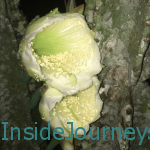My university had one – an extensive underground walkway that connected all the buildings on campus so there was little need to go outside on those bone-chilling cold days. We called ours the tunnel.

On a recent trip to Toronto, I discovered a similar underground walkway in the downtown area. Known as the Toronto PATH or simply the PATH, at 19 miles, this network of subterranean pathways vastly surpasses my former school’s tunnel.
Its main artery runs along Yonge and Bay Streets, as far north as the Toronto Coach Terminal on Dundas Street and south to Queen’s Quay. This conduit, through which 200,000 people pass daily, connects retail, business, entertainment and public transportation hubs. Add visitors and residents and the number rises.
The PATH’s impressive 4 million square feet of retail space earned it a spot in the Guinness Book of World Records as the world’s largest underground shopping complex.

Each letter in the PATH’s four color logo is a directional code pointing you south (red P), west (orange A), north (blue T) and east (yellow H). In addition, there are other signs to office buildings and major centers.
To me, the PATH is ambitious and intimidating — ambitious because of Matthew Lawson’s vision. Lawson, the 1960s city planner, was able to get a few developers to buy into the idea of including underground shopping in their complexes. This expanded the original and limited 1900s underground walkway that connected Eaton’s department stores, and the newer Union Station to the Royal York Hotel leg.

Intimidating, because it is so extensive – I felt like I was walking a maze. Despite finding my way from my office to the hotel the first day, the next morning when I tried to reverse my route, I got turned around several times. I realized only when I found myself in the same spot I had been a few minutes earlier. After the third time, I gave up in frustration and headed to the closest exit, even though it was raining.
As soon as I got outside, I oriented myself by looking for a familiar building and was in my office a few minutes later. I’m not one to give up easily and felt a delightful sense of accomplishment the next morning when I didn’t get lost.
Some PATH Stats:
- 1 railway terminal
- 2 major department stores
- 2 major shopping centers
- 5 subway stations
- 6 major hotels
- 20 parking garages
- 50+ buildings and office towers
Have you explored Toronto’s PATH?
Linking up with Travel Photo Thursday that Nancie at Budget Travelers Sandbox organizes.
Click the link to view other photos from around the world.


 Loading InLinkz ...
Loading InLinkz ...





























